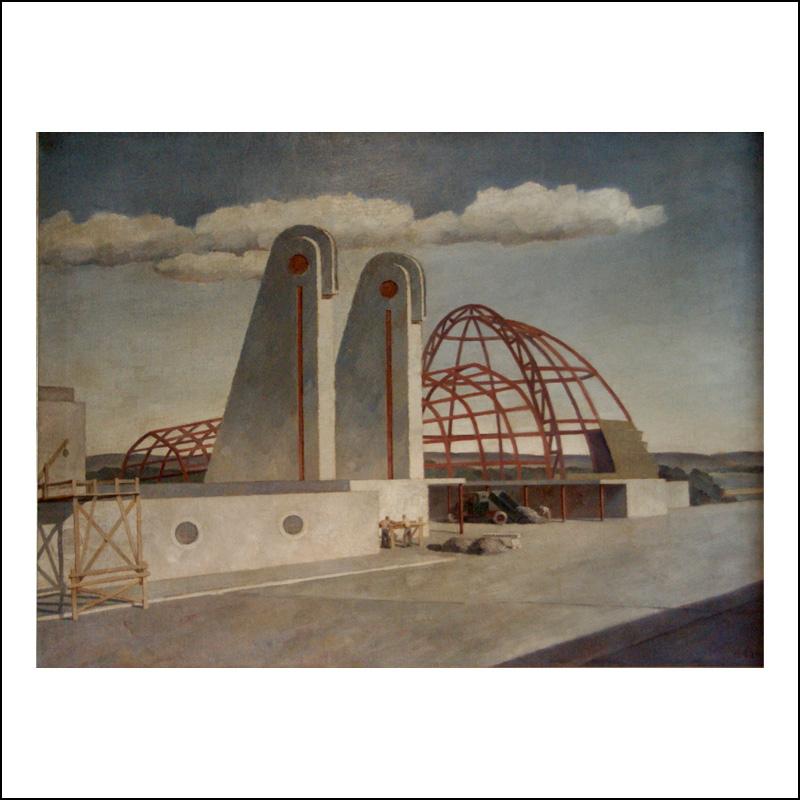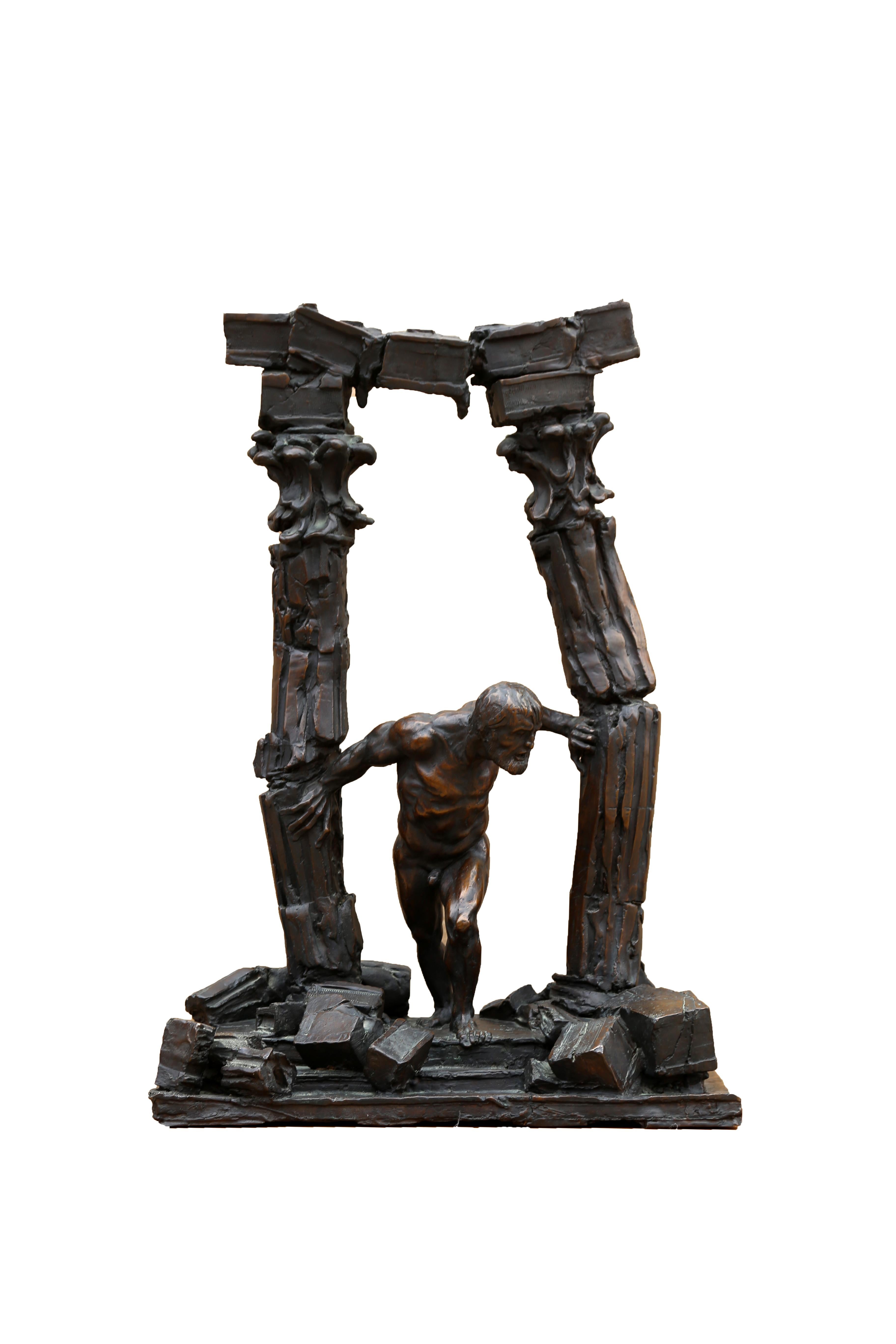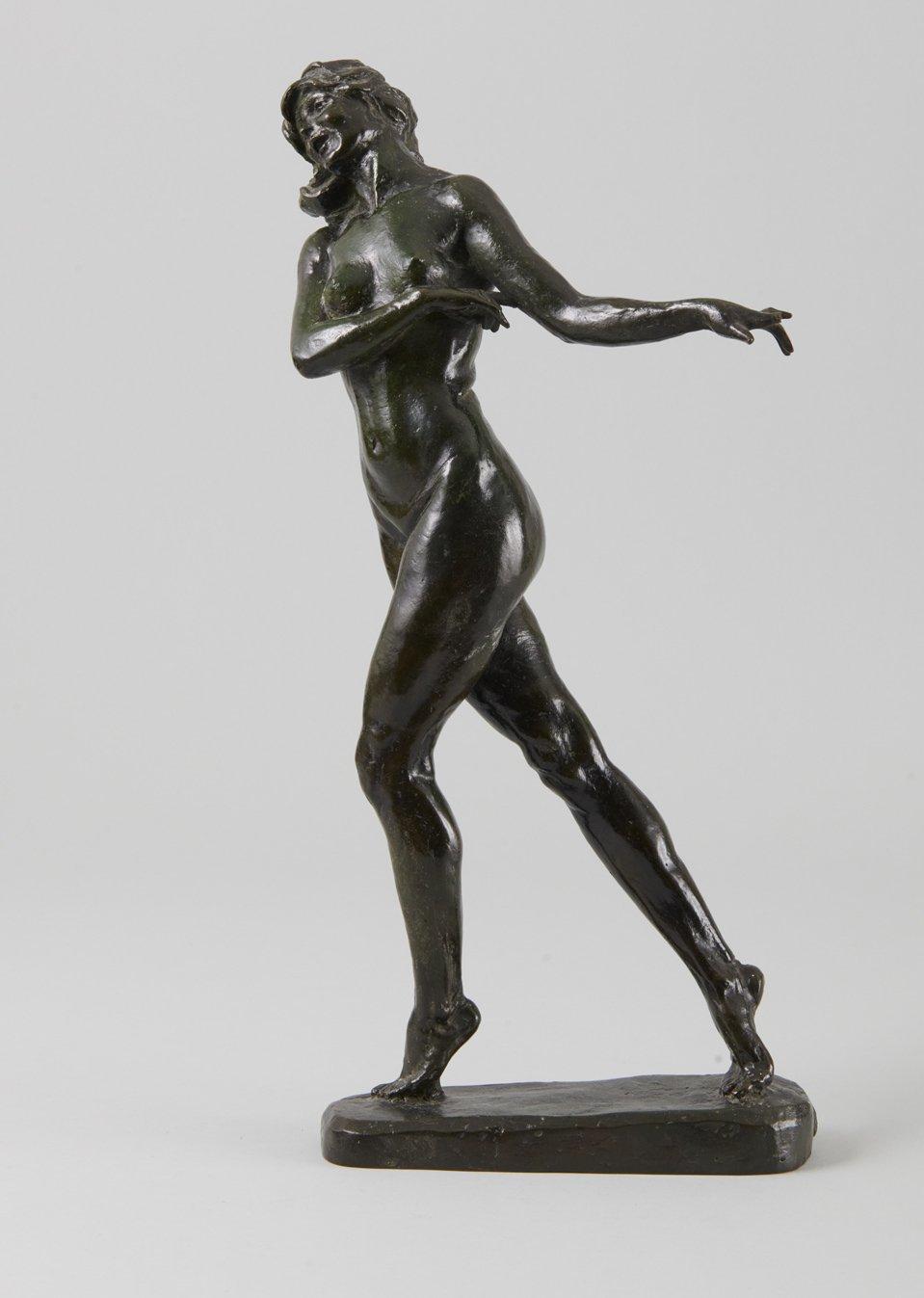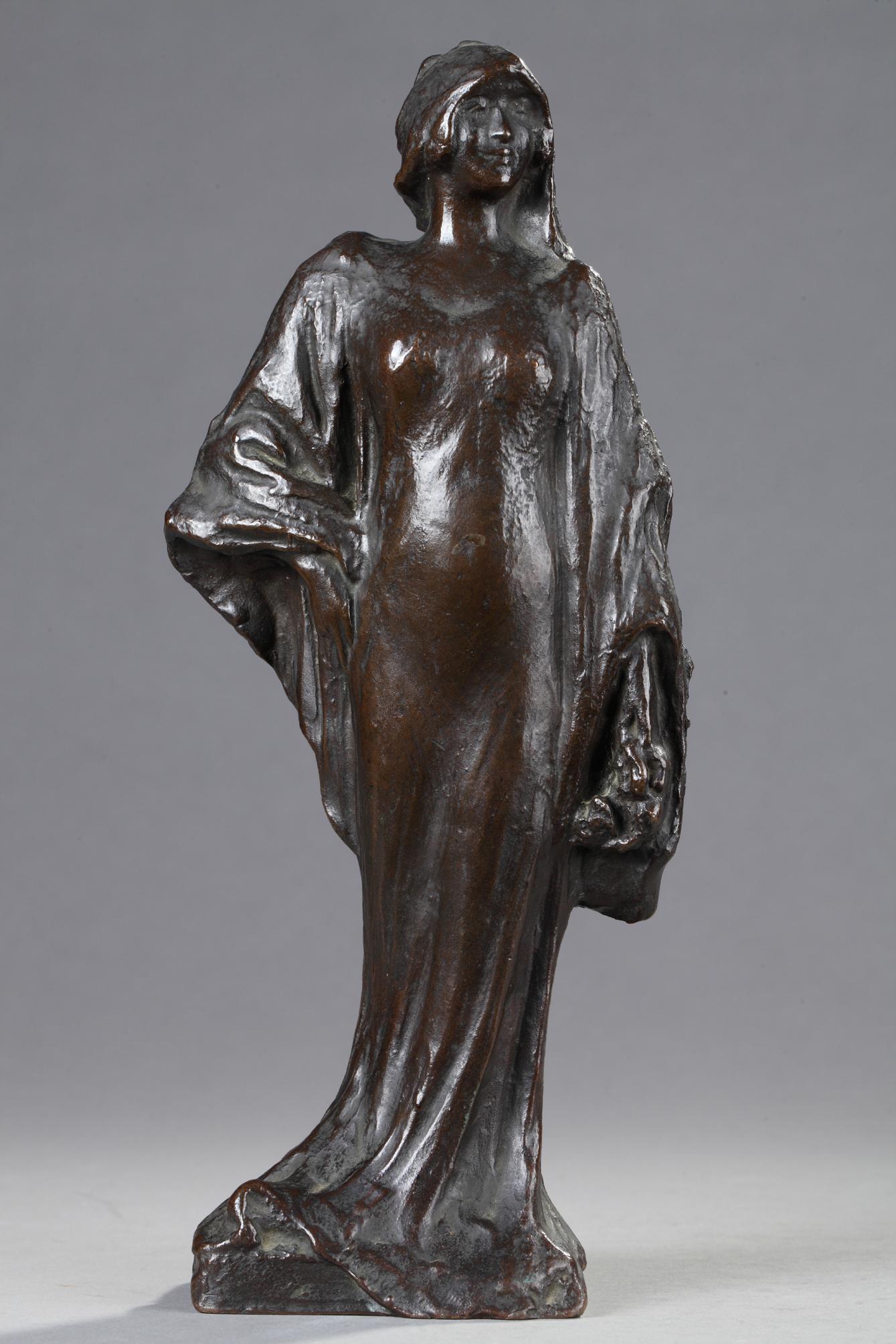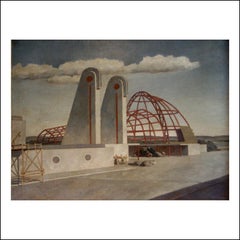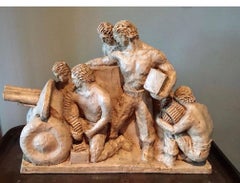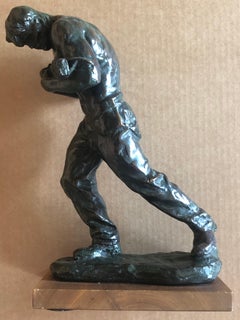
American Scene Modern Sculpture WPA Military Mid-Century Modernism Female Artist
View Similar Items
Want more images or videos?
Request additional images or videos from the seller
1 of 5
Anita WeschlerAmerican Scene Modern Sculpture WPA Military Mid-Century Modernism Female Artist1936
1936
About the Item
- Creator:Anita Weschler (1903 - 2000, American)
- Creation Year:1936
- Dimensions:Height: 22 in (55.88 cm)Width: 26 in (66.04 cm)Depth: 10 in (25.4 cm)
- Medium:
- Movement & Style:
- Period:
- Condition:The work has been restored. It is in very good condition.
- Gallery Location:New York, NY
- Reference Number:1stDibs: LU115626508212
About the Seller
5.0
Platinum Seller
These expertly vetted sellers are 1stDibs' most experienced sellers and are rated highest by our customers.
Established in 2008
1stDibs seller since 2019
163 sales on 1stDibs
More From This SellerView All
- 1, 000 piece Museum Quality Collection of Art & Objects from NYC 1939 Worlds FairBy Harry LaneLocated in New York, NY1,000 piece Museum Quality Collection of Art & Objects from NYC 1939 Worlds Fair Harry Lane (1891-1973) "1939 World’s Fair Construction," 30 x 40 inches, Oil on canvas, signed lower...Category
1930s American Modern Landscape Paintings
MaterialsPlaster, Photographic Paper, Canvas, Oil
- 2 Sculptures: "The Power" & "The Glory" WPA Depression WWII era mid 20th centuryBy Agnes YarnallLocated in New York, NY2 Sculptures: "The Power" & "The Glory" WPA Depression WWII era mid 20th century by Agnes Yarnall circa 1940s. Sculptor, painter, poet and artistic historian, Agnes Yarnall has, since the age of six been breathing life into her art. Renowned as a sculptor, whose commissioned portrayals of contemporary celebrities are prized. She has sculpted Judith Anderson, Edna St. Vincent Millay, Carl Sandburg...Category
1940s American Modern Figurative Sculptures
MaterialsPlaster
- Barge Toiler -Mid 20th Century Modern WPA Labor Plaster Depression-Era SculptureBy Max KalishLocated in New York, NY"Barge Toiler" by Max Kalish is a Mid 20th Century modern Depression-Era sculpture from his Labor series. The WPA era work is made of plaster. Max Kalish (1891 – 1945) Barge Toiler...Category
1930s American Modern Figurative Sculptures
MaterialsPlaster
- "Pioneer Family" WPA American Modernism Plaster Maquette Realism 20th CenturyBy William ZorachLocated in New York, NY"Pioneer Family," 23 1/2 x 16 1/4 x 10 3/4 inPlaster. c. 1927. Unsigned. Realism The Smithsonian has a cast of this sculpture in its collection. Pictured on the cover of “The Sculpt...Category
1920s American Modern Figurative Sculptures
MaterialsPlaster
- 1961 Coty Award Plaque Kenneth Hairdresser Jacqueline Onassis Bronze FashionLocated in New York, NY1961 Coty Award Plaque Kenneth Hairdresser Jacqueline Onassis Bronze Fashion Bronze on wood. The wood plaque measures 12 3/4" by 20 3/4 inches. The bronze plaque itself is 13 3/4 x 8 3/4 inches and the the bronze inscription, which reads "COTY, American Fashion Critics Special Award 1961 to KENNETH of LILY DACHE...Category
1960s American Modern Figurative Sculptures
MaterialsBronze
- Industrial Machine Age American Scene WPA Mid 20th Century 1939 SF World's FairLocated in New York, NYIndustrial Machine Age American Scene WPA Mid 20th Century 1939 SF World's Fair HAIG PATIGIAN (American/Armenian, 1876-1950) Aeronautics Pediments Two Plaster Casts, c. 1930s each 13.25 x 14.75 x 6 inches It's possible these moquettes were created for the 1939 World's Fair, the Golden Gate International Exhibition in San Francisco. Provenance: Private Collection of Lois M. Wright, Author of "A Catalogue of the Life Works of Haig Patigian, San Francisco Sculptor, 1876-1950),” 1967 Loan to Oakland Museum of California (Oakland, CA) BIO Haig Patigian is noted for his classical works, which are especially numerous in public venues in San Francisco, California. Patigian was born in Van, Armenia, which at that time was under Turkish rule. Haig was the son of Avedis and Marine Patigian, both teachers in the American Mission School there. He and his older brother showed an aptitude for art early on and were encouraged by their parents. Their father himself had taken up the new hobby of photography. The 1880s were harsh times, however, for many Armenians under an oppressive rule by the Turkish government. Many people were fleeing to the safety of the United States. Suspicious Turkish authorities accused his father of photographing city structures for the Russian government, and in 1888 he fled for his life to America. Haigs father made his way to Fresno, California, and began life anew as a ranch hand. Within two years he sent for his wife, as well as Haig, his three sisters and brother, and in 1891 the Patigians made the journey from Armenia. Haigs father, an industrious man, worked on various farms, and eventually bought his own ranch and vineyard. It was among fertile farmland of Fresno that Haig grew up. Young Haigs education consisted of teachings by his parents and by intermittent attendance in public schools. Although he had dreams of becoming an artist, he did not have the opportunity for formal study of art, and began working long days in the vineyards around Fresno. At age seventeen, Haig made a step towards his dreams and apprenticed himself to learn the trade of sign painting. In his spare time he nurtured his interest in art by painting nature and life scenes with watercolors and oil paints. When his sign-painting mentor left Fresno, Haig opened his own shop and made a name for himself in the town. San Francisco, in the meantime, had been attracting artists since the Gold Rush and had become a thriving art center. Within a few years, Haig had put aside several hundred dollars to move to San Francisco, joining his brother who was already working there as an illustrator. In 1899, when he was twenty-three, Haig had saved enough money to enroll at the Mark Hopkins Art Institute in San Francisco. Like many aspiring artists of his time, Patigian supported himself by working as a staff artist in the art department of a local newspaper, and in the winter of 1900, nearing his 24th birthday, Haig began work for the San Francisco Bulletin, producing cartoons, black and white illustrations, as well as watercolors. In 1902 tragedy struck Haig and his family. His 29-year-old brother died of pneumonia, and then his frail mother died a short time later. Five months more saw his youngest sister, just out of high school, die too. Saddened and depressed, Haig moved out of the studio he had shared with his brother, and into a dilapidated studio in a poor section of town. During this time of sadness, Haig fed a growing interest in sculpture. In 1904 Haig created what he later called his "first finished piece in sculpture". The work, called "The Unquiet Soul", depicted a man thrown back against a rock while waves lash at his feet. The body was tense and twisted, with one hand, in Haig's own words, "searchingly leaning and clutching the rock, while the other masks his troubled head". The Press Club of San Francisco, which Haig had joined in 1901, put "The Unquiet Soul" on exhibition and local headlines proclaimed "Local Newspaper Artist Embraces Sculptor's Art", and "First Work Predicts Brilliant Future". With the support of friends and community acclaim, the young illustrator left his newspaper job and became a professional sculptor. The path of his new career was not easy though. Haig had never made much money working for the newspaper and his father needed help with growing debt from funeral expenses and business problems. From time to time Haig sold some artwork, but also occasionally borrowed from friends to pay the rent. He was the classic 'starving artist'. In the spring of 1905 a white-bearded 81-year-old stranger knocked on Haig's door. It was George Zehndner, from Arcata, California. Zehndner had been born in Bavaria, Germany in 1824, the son of a farmer. In 1849 he had come to America looking for prosperity, settling in Indiana, where he worked on a farm and learned English. He found his way to the West Coast in 1852. Penniless, he worked in various jobs from San Francisco to Sacramento, then found some luck working in the gold fields of Weaverville in Trinity County, and eventually moving to a farm on 188 acres near Arcata. In his 77th year in May of 1901, Zahndner had taken a trip to San Jose, where he stood in a crowd to see a man he thought much of, President William McKinley. McKinley was popular as 'the first modern president' partially because he realized going out to meet the common person increased his support. In September of that year, however, an anarchist assassinated the president while he stood in a receiving line at the Pan-American Exhibition in Buffalo, New York. Soon after, the city of San Jose erected a statue of the slain president in St. James Park. Zehndner took a second trip to San Jose where he visited the McKinley monument. Touched, Zehndner decided that, no matter the cost, his town of Arcata too would memorialize McKinley. George Zehndner had read about Haig in a newspaper article and asked if Patigian would create a heroic statue of the late President McKinley for Arcata. When asked how much it would cost, Haig responded, despite his borderline poverty, with the fabulous sum of $15,000. Zehndner agreed. The President was to be portrayed standing, wearing an overcoat, with his feet planted squarely on the ground. In the finished statue, one hand is held out before him in a typical posture of speaking, with the other hand holding the speech as his side. The 9-foot statue...Category
1930s American Modern Figurative Sculptures
MaterialsPlaster
You May Also Like
- "Female Torso"Located in Southampton, NYRosa Portugal marble torso of a woman. Unsigned. Late 20th century. In excellent condition. American School. 18.5 inches high by 10 wise by 7 inche...Category
Late 20th Century American Modern Figurative Sculptures
MaterialsMarble
$1,950 Sale Price53% Off - "Bending Figure"By Chrissy HarrisLocated in Southampton, NYMarble free form sculpture by Chrissy Harris. Composition is cipollino green marble from Greece. Signed on base of marble sculpture. American School....Category
Late 20th Century American Modern Figurative Sculptures
MaterialsMarble
$2,720 Sale Price20% Off - "Female"By Michael PattersonLocated in Southampton, NYWonderful original granite sculpture by well known contemporary artist Michael Patterson. This work of the female form was completed in 2013. The sculpture is attached to a white m...Category
21st Century and Contemporary American Modern Figurative Sculptures
MaterialsStone
- Buffalo, Silver Sculpture by Arnold GoldsteinLocated in Long Island City, NYSilver cast metal sculpture of an American buffalo created by American artist Arnold Goldstein. This artwork has the signature inscribed on the belly.Category
1970s American Modern Figurative Sculptures
MaterialsMetal
$1,200 Sale Price20% Off - KossackLocated in Los Angeles, CAThis sculpture is part of our exhibition America Coast to Coast: Artists of the 1930s Kossack, c. late 1930s, polychromed cedar and walnut relief sculpture, carved signature under the base of the figure, 15 x 8 x 3 1/2 inches (figure), 10 x 19 inches (board), exhibited at Zeidler's solo exhibition at the San Francisco Museum of Art, November - December, 1942 (label verso), label verso reads "Kossack / cedar & walnut / Avis Zeidler" About the Sculpture Kossack is typical of Aviz Zeidler’s direct carved wood sculptures of the 1930s. The subject looks directly at the viewer, unfeeling behind a polychromed stare. Seemingly influenced by two of her major teachers, California’s Ralph Stackpole and New York’s William Zorach, Zeidler drew on primitive traditions to create what one critic described as her “gruesome wood sculptures.” Rigid, solid, and unmoving are other words that characterize Zeidler’s statues which often seem to have the deeply rooted ancient power of a totem. Zeidler’s “grimacing artificiality does, indeed, manage to hold a sense of force,” is how The San Francisco Examiner art critic put it in 1938 when describing the artist’s award-winning entry at the San Francisco Art Museum. The same words could have applied to Kossack when it was exhibited at the museum four years later. Perhaps the artist was trying to contain the power of the fearsome Kossacks, the enemy of so many Eastern European peasants, by freezing the image in wood. About the Artist Avis Zeidler (Nemkoff) was a California-based artist who is principally known for her sculpture and drawings. She was born in Madison, Wisconsin, but moved to Northern California by the late 1920s where she majored in art at Berkely and studied with Lucien Labaudt, Ray Boynton...Category
1940s American Modern Figurative Sculptures
MaterialsWood
- Samson, Bronze Sculpture by Arnold GoldsteinLocated in Long Island City, NYBronze sculpture of blind Samson collapsing the temple in the ultimate act in the story of Samson and Delilah created by American artist Arnold Goldstein...Category
1970s American Modern Figurative Sculptures
MaterialsBronze
